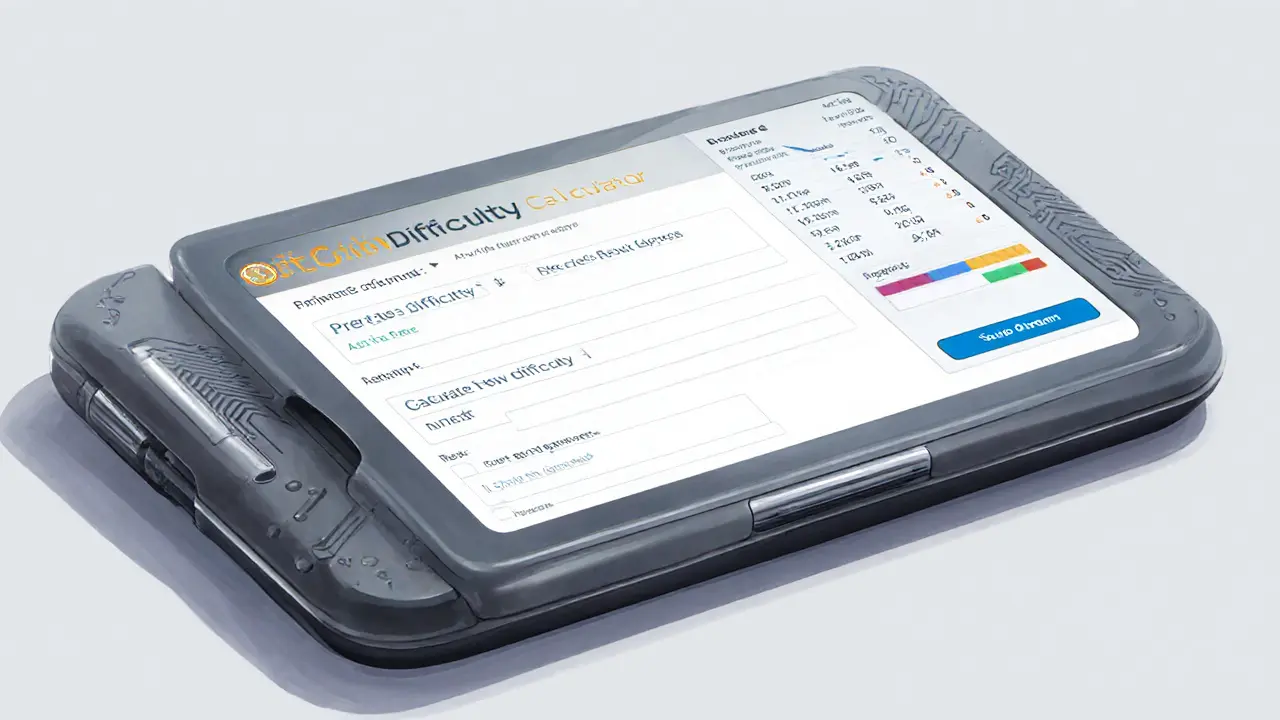Mining Difficulty: What It Means and Why It Matters
When working with mining difficulty, the numeric metric that tells how hard it is to solve a proof‑of‑work puzzle and add a new block. Also known as hash target, it directly influences how much work each miner must perform and how fast the network can confirm transactions.
At its core, mining difficulty reacts to the overall hash rate, the combined computational power of all miners trying to find a valid hash. When more hash power joins the network, the difficulty climbs to keep block times steady; when hash power drops, the difficulty eases. This feedback loop keeps the blockchain secure while ensuring a predictable block schedule.
How Difficulty Shapes Your Mining Strategy
Choosing the right mining pool, for example, hinges on how difficulty fluctuates. Pools spread the work among members, so when difficulty spikes, a pool with low fees and fast payout methods can soften the impact on individual earnings. Conversely, solo mining becomes less viable as difficulty rises because the chance of finding a block drops dramatically.
Hardware matters, too. An ASIC miner is designed to compute hashes at extreme speeds, making it more resilient to rising difficulty than a GPU rig. However, ASIC efficiency varies across models, and newer chips often include power‑saving features that improve profitability when difficulty climbs.
These relationships form a web of dependencies: mining difficulty influences block reward distribution, block reward affects miner revenue, and miner revenue drives decisions about hardware upgrades and pool selection. In semantic terms, we can state the following triples:
- Mining difficulty adjusts based on network hash rate.
- Hash rate determines the level of mining difficulty.
- Mining difficulty affects the profitability of ASIC miners.
- Mining pool choice depends on current difficulty and fee structure.
- Block reward is linked to mining difficulty through the network’s emission schedule.
Understanding these links helps you anticipate how a change in one factor ripples through the rest of your mining operation. For instance, if a major mining farm shuts down, hash rate drops, difficulty eases, and even a modest GPU setup can become suddenly profitable. That’s why staying aware of difficulty trends is a habit worth building.
Difficulty isn’t static; most proof‑of‑work networks recalculate it every 2016 blocks (about two weeks for Bitcoin). The algorithm looks at the average time it took to mine the previous period and then nudges the difficulty up or down to target a 10‑minute block interval. This automatic adjustment keeps the supply schedule on track and prevents miners from overwhelming the network with sheer compute power.
For traders and investors, difficulty provides a signal about network health. A steady rise often points to growing interest and investment in mining infrastructure, while a sharp drop may hint at regulatory pressure, energy cost spikes, or hardware shortages. By watching difficulty charts alongside hash rate graphs, you can gauge where the market sentiment is heading.
Our collection of articles below dives deeper into each of these angles. You’ll find step‑by‑step guides on switching mining pools, detailed reviews of ASIC models, analyses of hash rate distribution by country, and explanations of how block rewards evolve as difficulty changes. Whether you’re a hobbyist miner, a professional operation manager, or just curious about the mechanics behind crypto mining, the resources here will give you actionable insight.
Ready to explore the specifics? Scroll down to see practical tips, tool reviews, and market outlooks that will help you turn the abstract concept of mining difficulty into concrete decisions for your crypto journey.
How to Calculate Mining Difficulty in Bitcoin (2025 Guide)
Learn how Bitcoin's mining difficulty is calculated, why it matters, and how to use the formula for better mining decisions in 2025.
VIEW MORE
